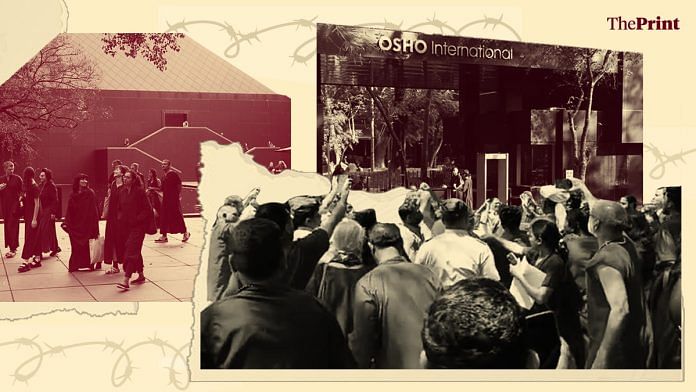Pune: The Osho International Meditation Resort in Pune was supposed to be a haven for spiritual seekers. But its peace has been shattered ever since a battle over land sale became more important than its promise of bliss.
But the discord isn’t just about the prime Koregaon Park property. That’s just one of the many cracks in the Osho fortress. The Osho family in Pune is a divided house today. There are ‘rebel’ swamis, court cases, even a Bollywood movie that got stuck in the wrangle. It’s now become a fight for the soul of Osho’s legacy and who gets to ‘control’ it.
The sleek meditation resort, once widely known as the Osho ashram, sits on 40 acres of landscaped grounds, with tranquil waterbodies, bamboo trees, and lush parks. A day here begins at 6 AM and ends at 11 PM, packed with meditation sessions, tai chi classes, and dance devotionals. But beneath this serene regimen lies a deep tension.
The Osho International Foundation, the Switzerland-based trust that runs the resort, has been trying to sell two plots of land within the resort, covering 9,800 sq m (2.4 acres) and valued at Rs 107 crore. The would-be buyer is automobile industrialist Rajiv Bajaj, whose house in Koregaon Park shares a wall with the resort.
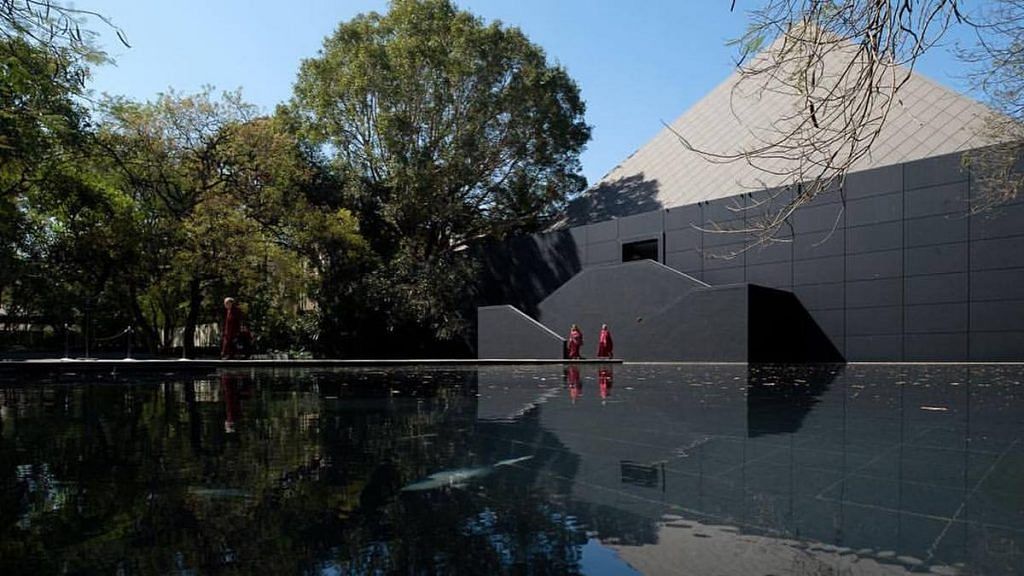
The move has deeply split the Osho community, with a ‘rebel’ faction of swamis leading a spirited campaign against the sale. Backed by hundreds of Osho’s Indian followers, they argue that the facility should remain an ashram dedicated to Osho’s memory—not a luxury resort.
The fact that the OIF is based abroad and run by non-Indian followers of Osho galls them too. To the swamis in India, it’s like a neo-colonial takeover of their beloved ashram for pure monetary gain.
“It’s like what the British did to India. Wherever there’s cream, a cat will appear,” said Swami Anadi, a member of this ‘rebel’ group who’s been banned from the resort premises since 2011 for opposing the management. “The OIF’s motive isn’t just money — if it was, they would make the ashram flourish. This is about destroying Osho’s legacy.”
Osho had said that when an enlightened person leaves their body, the spot will become either a mandir (temple) or dukaan (shop). The OIF turned the mandir into a dukaan.
-Swami Anadi
For now, the India faction seems to have the upper hand. Last December, the Mumbai joint charity commissioner blocked the Rs 107-crore sale and ordered the OIF to return the Rs 50 crore advance they received from Bajaj, and asked for an audit of accounts since 2005. The OIF then appealed to the Bombay High Court, which rejected its petition in April. The OIF has appealed to the Supreme Court, where the petition is listed for hearing on 22 July.
The OIF has remained tight-lipped on the matter.
“There are no two sides to this,” said Ma Amrit Sadhana, OIF trustee and management team member. “We’re not criticising anyone or playing politics, we’re not interested in fighting. We live together, in oneness. This is not about private property.”
The OIF is keen to weed out the noise at its gates, including of detractors crying foul about the management’s business decisions. Any criticism is unfounded, according to them, with one member comparing it to “a raintime frog crying at an elephant”.
Also Read: Osho Rajneesh, Indian mystic who promised utopia and ended up with bioterrorism in US
Gatekeeping a legacy?
Glistening, tall black walls and Osho devotees milling about in flowing burgundy robes announce the presence of the meditation resort in leafy Koregaon Park, home to some of the wealthiest real estate in India. Set up in 1974, this ashram-turned-resort put the area on the international map and helped transform it from a quiet suburban neighbourhood into an oasis of swank, with upscale restaurants and boutiques.
Close to the resort is a verdant park run by the Osho International Foundation, open for a few hours a day, which people can visit for free. For a day’s access to the resort, though, Indian nationals have to pay Rs 970 plus taxes, besides buying and wearing the maroon robes. The costs are over double for foreigners.
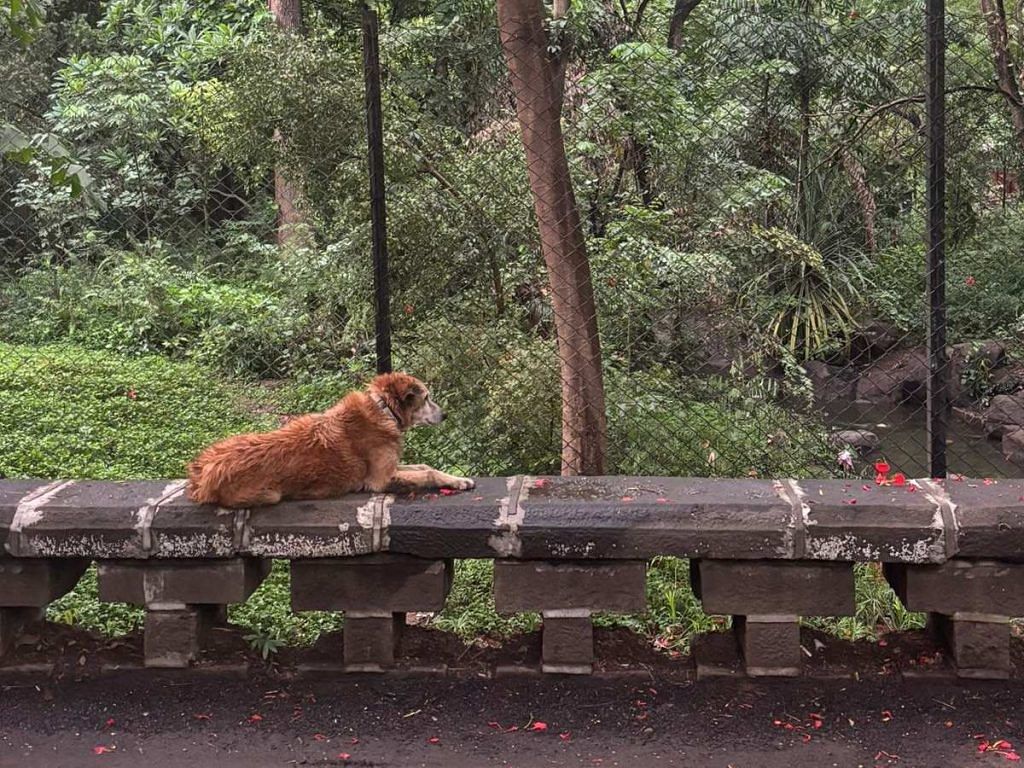
It’s a “spiritual Club Med, as in Meditation”, says the resort website, quoting Osho. There are guided meditation classes— involving everything from ‘Nataraj’ dance to chanting “gibberish”— annotated courses of Osho’s teachings at the in-house “multiversity”, and residential programmes with themes like ‘Zen Living’ and ‘Work as Meditation’.
“A resort based on meditation. Reflecting the understanding that meditation is a quality you can bring to any activity. It is not an activity in itself,” the website declares.
The OIF is keen to weed out the noise at its gates, including that of detractors crying foul about the management’s business decisions. Any criticism is unfounded, according to them, with one member comparing it to “a raintime frog crying at an elephant”.
People are working day in and out to further Osho’s vision, facilitating courses, and teaching medication so that people’s stresses and pains can be dissolved.
-Ma Amrit Sadhana, OIF trustee
“OIF is a miracle of management,” said Ma Amrit Sadhana firmly, dismissing the negative publicity. “People are working day in and out to further Osho’s vision, facilitating courses, and teaching medication so that people’s stresses and pains can be dissolved. We are working on helping people find love and joy in their lives.”
But many long-time Osho followers complain that this healing experience is no longer as freely available as it used to be. They speak of a time when the resort was a bustling hub, with many curious onlookers and devoted followers dropping by to spend as much time as they’d like. Now, they say, high ticket prices, expensive food, and a more luxurious brand are excluding the very people Osho was trying to reach.
“It’s like financial exclusion. They’ve made things so expensive. They are trying to reduce the beauty of Osho’s teachings to a luxury getaway resort for foreigners to feel spiritual,” said Shivani, a Pune-based IT professional in her late 20s who has been a follower of Osho for several years. “How can they say that they’re in financial trouble when they’re obviously making money?”
The OIF claims that they’re trying to sell the property because the foundation has been under severe financial stress. However, detractors allege that the foundation is trying to line its pockets without truly investing in continuing Osho’s legacy.
Blocked sale, audit on cards
The disputed property covers Koregaon Park’s Plot Number 15 and 16, also known as the Basho area, which houses the Osho Meditation Resort’s Olympic-sized swimming pool, sauna, tennis court, jacuzzi, and gym. Rahul Bajaj’s private property lies on the other side of the compound wall, hidden behind high gates.
The OIF claims that they’re trying to sell the property because the foundation has been under severe financial stress—compounded by both the COVID-19 pandemic and the Ukraine war, according to legal documents. However, detractors allege that the foundation is trying to line its pockets without truly investing in continuing Osho’s legacy. The OIF maintains that those who have not set foot in the resort recently — and have not been working as part of their foundation — have no right to speculate on the management’s decisions.
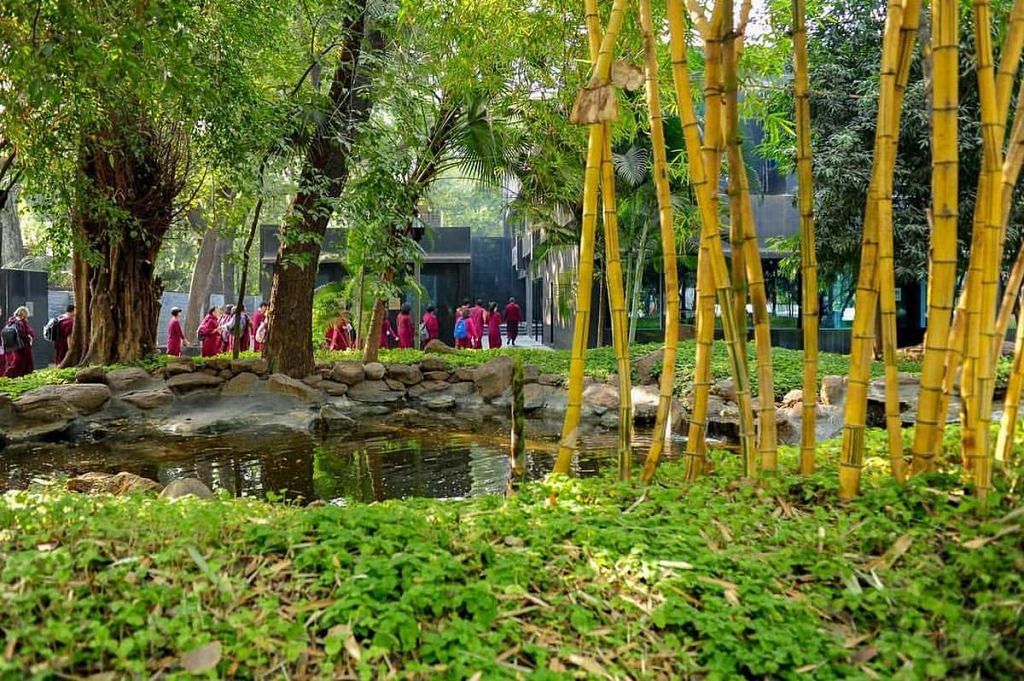
Nevertheless, in a 7 December 2023 order, the joint charity commissioner (JCC) ascertained that OIF failed to show the “grave and compelling necessity” of selling the property, observing that it did not try to raise funds through loans or donations. The order also called for an audit of the OIF for the 18-year period between 2005 and 2023.
“The past record of OIF shows that the trustees are habitually dealing with the properties of the Trust. They are not serious with the funds and income of the Trust. They are making hasty decisions without taking any expert advice…,” the order said.
Subsequently, the foundation challenged the order, including the audit, in the Bombay High Court, but to little avail. In April, the court upheld the JCC’s decision to block the sale and conduct an audit.
For those who have been protesting against the proposed sale since they learned of it in 2021, this was a big shot in the arm for their cause, even as the OIF has gone on to appeal the case to the Supreme Court.
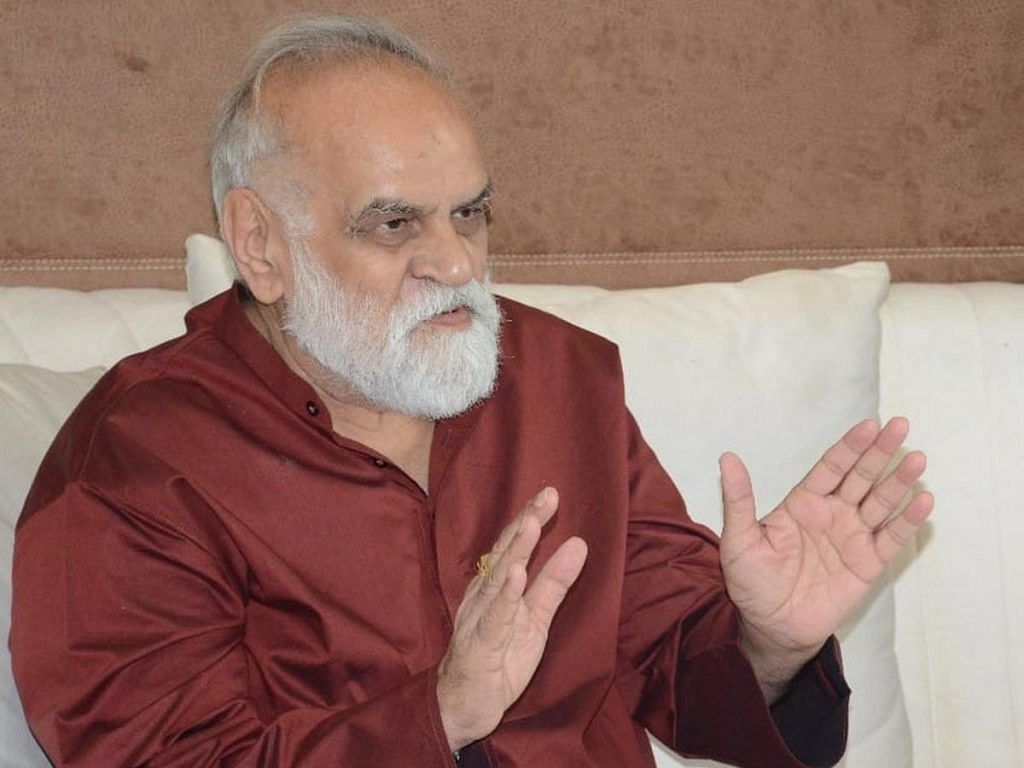
“I used to welcome the media into the ashram any time they would come. This was the job given to me by Osho and I continued doing it till the year 2000,” said Swami Kirti, another disciple who has been vocal against the OIF’s management. He had been personally appointed by Osho to be in charge of handling media relations, which he did from 1987 to 2000.
Osho wanted the ashram to expand after his death, according to Swami Kirti. He’s been banned from the ashram since 2001 for opposing the management’s policies, which he claims are driven by ‘gross commercialisation’.
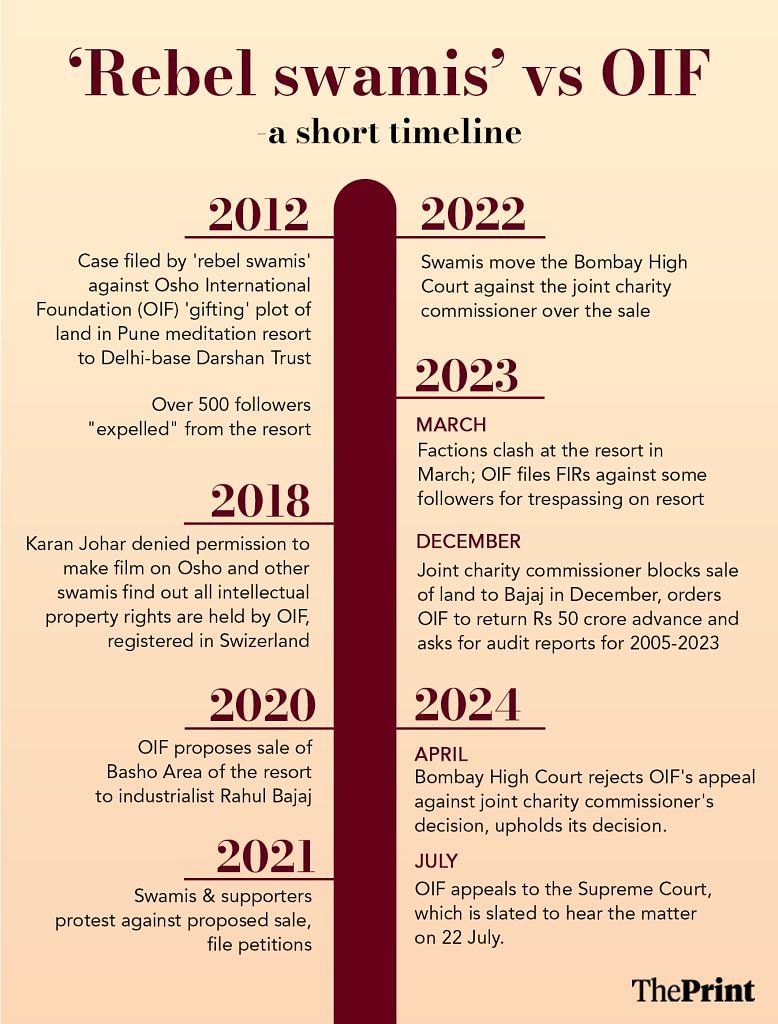
But though there has been strife among different factions of Osho’s followers ever since his death in 1990, the first time the ‘rebel’ swamis — including Swami Anadi — took OIF to court was in 2012. This was for ‘gifting’ Rs 50 crore worth of land from the resort to another trust. After this, many followers were reportedly “expelled” from the resort.
“We realised that for some reason, OIF is trying to dispose some properties — one method is by gifting them to new trusts they have set up themselves,” alleged Swami Anadi.
The next big flashpoint came with the now-stalled Bajaj sale.
“According to law, the foundation has to first take permission from the charity commissioner to sell the land. But instead, they took a Rs 50 crore advance from Bajaj. I’m happy that the law is holding them accountable,” said Swami Anadi, who despite being banned from the ashram remains devoted to Osho.
He lives barely 2km away from the ashram in Koregaon Park. The last time he went to the ashram was on 22 March 2023 — a day marred by violence, despite the foundation’s emphasis on peace.
Over 200 Facebook pages related to Osho’s teachings have been deleted over the last few weeks— leading to a sudden vacuum of Osho-related content online.
A tussle for legitimacy
Osho’s ‘enlightenment day’, 21 March, has always been a major festival for his followers. But simmering tensions between the OIF and the opposing faction cast a pall over the last 15 years. Grand free-for-all celebrations no longer happened, and even common practices, like wearing Osho prayer beads, were restricted at the resort.
Last year, those resentments boiled over. Droves of followers, unhappy with the resort’s direction, decided to take matters into their own hands and organised a grand celebration to mark Osho’s enlightenment.
Around 500 people showed up, dressed in robes, singing keertans, and wearing the controversial diksha malas—which OIF management reportedly claimed had been relinquished by Osho. Not allowed inside the resort, with the management citing the malas as a reason, they continued to protest outside even as the police imposed Section 144.

By the next day, 22 March, the crowd had dwindled to around 200 people — and the resort temporarily allowed them to enter, wearing their rosaries.
But a ruckus ensued as excited followers swarmed into the resort. A police lathi charge followed, and the OIF filed two FIRs by that night. Video footage of swamis charging at police went viral. And the OIF doubled down, alleging trespassing and violence by the ‘rebel’ group.
“Osho had said that when an enlightened person leaves their body, the spot will become either a mandir (temple) or dukaan (shop). The OIF turned the mandir into a dukaan,” said Anadi.
The panic among a section of Osho’s followers continues. Over 200 Facebook pages related to Osho’s teachings have been deleted over the last few weeks— leading to a sudden vacuum of Osho-related content online.
The OIF has declined to comment on the reason, but the ‘non-official’ pages were deleted due to copyright issues. Swami Kirti claims this is an attempt to prevent a repeat of the March 2023 celebrations, as many Osho followers were planning to organise a Guru Purnima celebration on 21 July 2024.
Also Read: This artist imagines India and Italy as neighbours. He’s inspired by his teacher Osho
Bollywood & a new can of worms
With his devoted global following of ‘neo-sanyasis’, 93 Rolls-Royces, diamond-and-ruby-studded Rolex, and a huge commune in Oregon, Osho’s life embodied a paradoxical mix of enlightenment, free love, and flowing funds. Since his ‘mysterious’ death, the factional tussle over his will and rightful successors has persisted for decades, interspersed with tell-all books and films like the 2018 Netflix documentary Wild Wild Country.
Then, Bollywood came knocking, further deepening the numerous fault lines within the Osho world.
In 2018, Karan Johar planned to make a biopic of Osho, with Aamir Khan reportedly set to play the guru. However, the project was halted when the Osho International Foundation (OIF) took out a full-page ad in a film magazine, asserting that they owned the copyright and that no film could be made without their permission.
“This is when we learned that Osho’s intellectual property rights were held by the Osho International Foundation, based in Switzerland,” said Swami Anadi. “Their claim said that the Indian foundation was a subsidiary of theirs.”
We are happy that the charity commissioner and the high court have understood our case and stopped the sale of the plots of the resort. We could not get any political support
-Swami Kirti
In an already fraught situation, this revelation opened up a can of worms, prompting the ‘rebel faction’ to bolster their case against the OIF. Their grievances run deep and have multiple strands.
Physical property is one. Since the 2010s, the Osho ashram started being marketed as a resort, with the establishment of the private trust Osho Multimedia and Resorts Pvt Ltd, with trustees as directors. The OIF had also begun referring to Osho’s memorial as a meditation hall.
“The management would insist we call it a meditation hall and not a samadhi (memorial). That’s when we realised they were trying to commercialise the area,” said Swami Anadi. “Can Adani or Ambani build a hotel at Rajghat? No, because it’s a samadhi, a place of peace.”
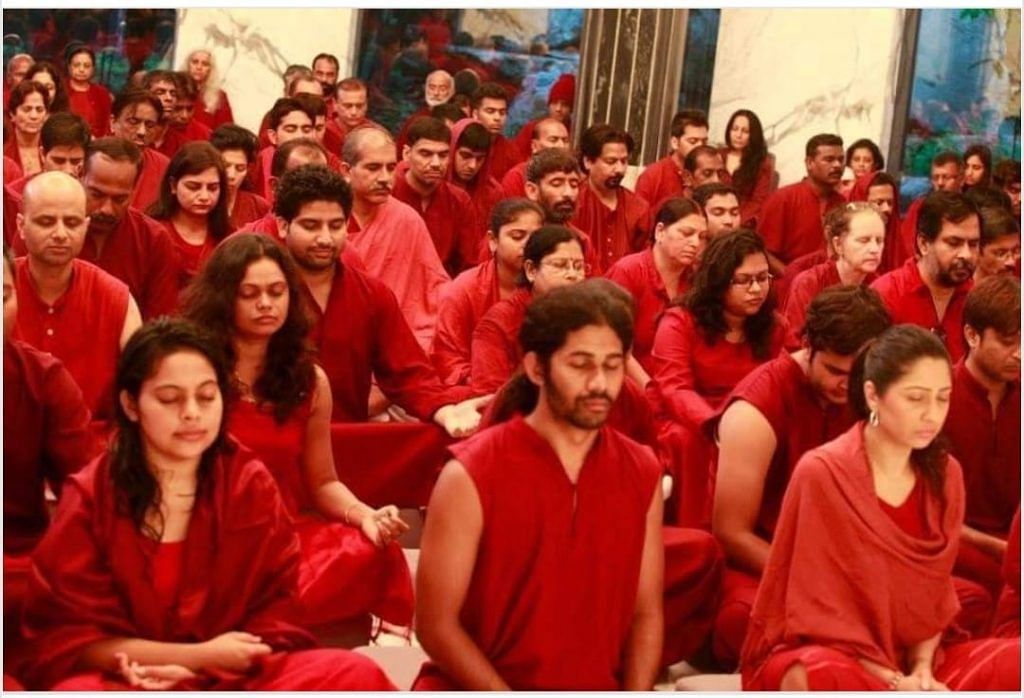
Anadi and others began collecting government documents on the ashram from the charity commissioner and actively investigating what the OIF was doing with the various properties. They filed RTIs and cases to stay sales, three of which are currently pending, including the Basho sale that the OIF has appealed in the Supreme Court.
Intellectual property is another sore point. As the ‘rebel’ swamis dug deeper, they realised the foundation was making money through Osho’s books and audio discourses not just in India, but in the United States too.
“Earlier, Osho World Foundation based in Delhi has been successful in defeating Osho International Foundation in two cases in the USA, oshoworld.com case (in 2001) and OSHO trademark case (in 2009). Because of this success, we were able to make all Osho discourses on audio and books downloadable for free,” said Swami Kirti.
They plan to take things further and challenge OIF’s copyright and trademark claims in India at the Bombay High Court soon. The HC’s decision in the Basho property case has reinvigorated the dissident faction.
“We are happy that the charity commissioner and the high court have understood our case and stopped the sale of the plots of the resort. We could not get any political support, because the Western trustees have had full support from the political parties and administrative machinery of Maharashtra. The local Koregaon park police also have always been supporting them,” claimed Swami Kirti.
“One day, corruption will leave our ashram,” said Swami Anadi wistfully, Osho smiling gently in a framed photo behind him. “Osho is a figure like Jesus. How can you trademark him?”
Meanwhile, at the resort, Osho’s followers continue to connect with his teachings at the pristine, peaceful premises. The resort’s Facebook page recently posted a reel of a babbling brook, emblazoned with the caption: “People who haven’t visited the Osho International Meditation Resort, ask questions. People who have visited, respond to these questions.”
(Edited by Asavari Singh)


